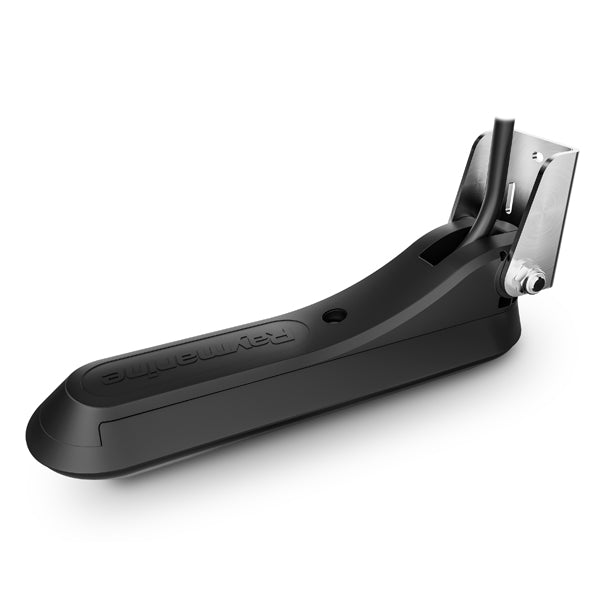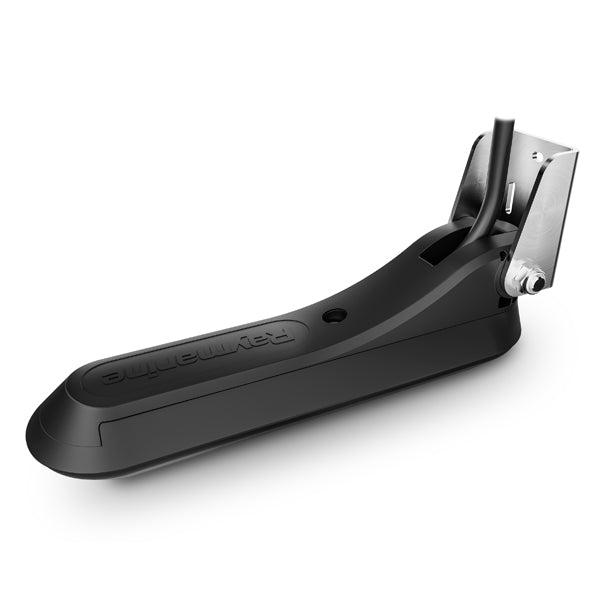2 Dogs Marine
RAYMARINE - RV-100 RealVision 3D Transom Mount Transducer
RAYMARINE - RV-100 RealVision 3D Transom Mount Transducer
Couldn't load pickup availability
RAYMARINE RealVision 3D™ Sonar Transducers for the new Axiom and Axiom Pro Multifunction Displays
RV-100 RealVision 3D Transom Mount Transducer, Direct connect to AXIOM MFDs (8m cable).
Material
The first step is to determine what material the transducer should be composed of.
- Plastic housings are recommended for fiberglass or metal hulls.
- Stainless Steel housings are recommended for steel or aluminium hulls.
- Bronze housings are recommended for fiberglass or wood hulls.
Bronze is preferable to plastic for wooden hulls because the expansion of wood could damage a plastic transducer and cause a leak. Installation of a stainless steel housing in a metal hull requires an insulating fairing.
A metal housing should NOT be installed in a vessel with a positive ground system.
Types of Transducers
Transom Mount Transducers
As the name implies, transom mount transducers are installed on the boat's transom, directly in the water and typically sticking a little below the hull. Transom mounts are composed of plastic and tend to be less expensive than other transducers.
Transom mount transducers are recommended for planing hulls of less than 27 feet (8 meters), such as personal watercraft and powerboats with outboard, inboard-outboard and jet drives. They are not recommended for large or twin screw inboard boats because aerated water from the propeller reduces performance. They are also not recommended for operation at very high speeds.
Transom mounts adjust to transom angles from 3° – 16°. For angles greater than 16°, a tapered plastic, wood or metal shim will be needed. However, the transducer should be adjusted so it is angled slightly forward when the boat is in the water.
In-hull (a.k.a. shoot-through) transducers are epoxied directly to the inside of the hull. These are only used in fiberglass hulls. In-hulls will not work with wooden, aluminum, or steel hulls, or in foam sandwich/hulls that have air pockets. Any wood, metal, or foam reinforcement must be removed from the inside of the hull.
With an in-hull transducer, the signal is transmitted and received through the hull of the boat. As a result, there is considerable loss of sonar performance.
In other words, you won't be able to read as deep or detect fish as well with an in-hull transducer as with one that's transom mounted or thru-hull mounted.
Fiberglass hulls are often reinforced in places for added strength. These cored areas contain balsa wood or structural foam, which are poor sound conductors. The transducer will need to be located where the fiberglass is solid and there are no air bubbles trapped in the fiberglass resin. You'll also want to make sure that there is no coring, flotation material, or dead air space sandwiched between the inside skin and the outer skin of the hull.
Advantages
- No holes drilled in hull
- Excellent high speed performance
- No obstructions in the water
- Low maintenance
Disadvantages
- Reduced maximuum depth reading
- Reduced fish detection
- Can only be used with fibreglass hulls
Through-hull transducers are mounted through a hole drilled in the bottom of the boat and protrude directly into the water. This type of transducer generally provides the best performance.
Through-hulls are recommended for displacement hulls and boats with straight-shaft inboard engines. You'll also need a fairing block that allows the transducer to be mounted properly. Through-hull transducers must be installed with a fairing to ensure proper alignment and a secure fit.
Through-hull transducers must be positioned in front of the propeller, rudder, keel or anything else that may create turbulence. They must be mounted in a position that is always underwater and angled straight down.
Tilted Element Transducers
Tilted Element transducers are mounted through a hole drilled in the bottom of the boat and protrude directly into the water. Tilted Element transducers offer performance similar to through-hulls.
Tilted Element transducers are mounted flush against the hull. Unlike traditional Through-Hull transducers, Tilted Elements do not need a fairing block. The element inside the transducer acts as a leveling agent, working with the deadrise (angle) of your hull to ensure the transducer's beam is directed straight down.
These transducers will generally come in two configurations based on your hull type, a 12º and 20º version. Select a 12º tilt when the deadrise of your hull falls in the 8º to 15º range. Select the 20º tilt if your hull's deadrise is in the 16º to 24º range.
When installing a Tilted Element transducer make sure to position it in front of the propeller, rudder, keel or anything else that may create turbulence. They also must be mounted in a position that is always underwater and angled within the appropriate deadrise range.
A80464
Share


